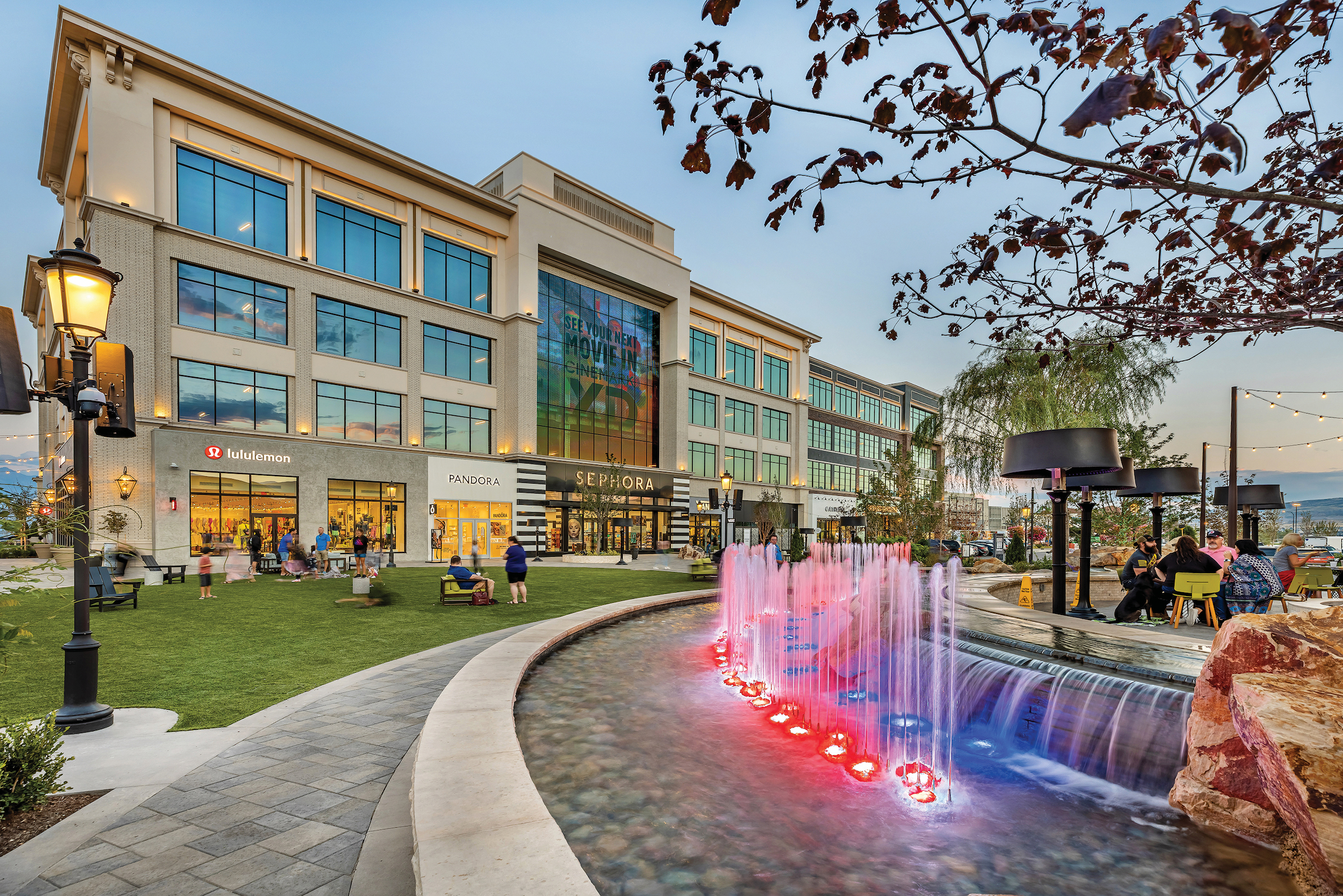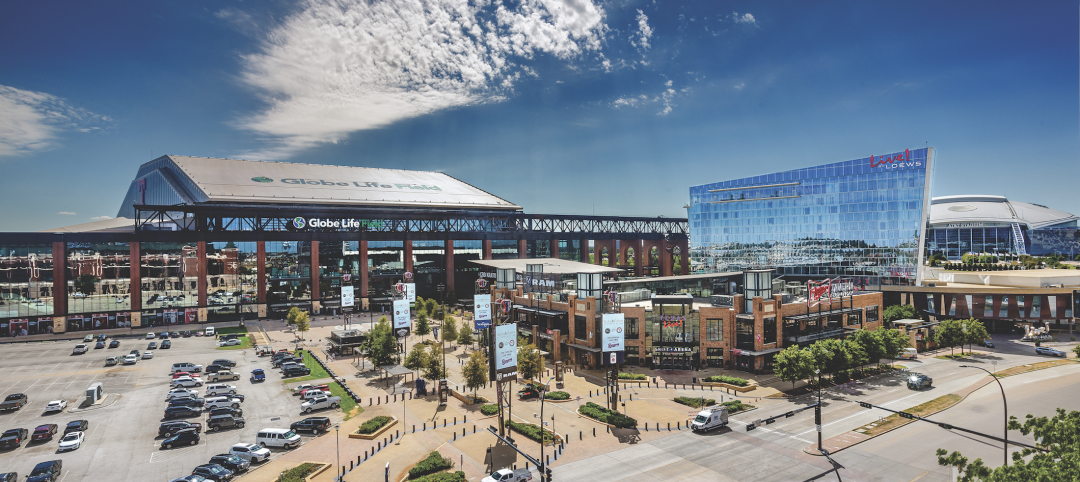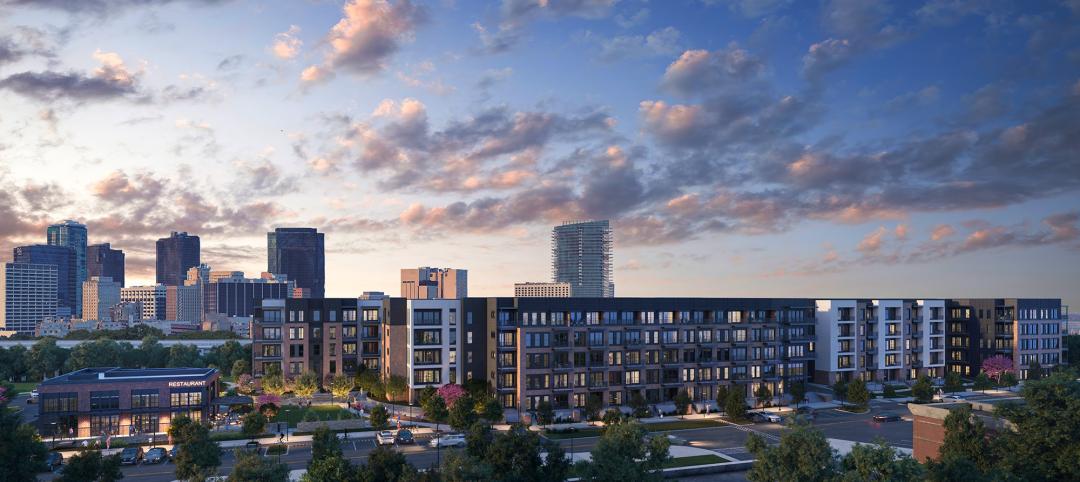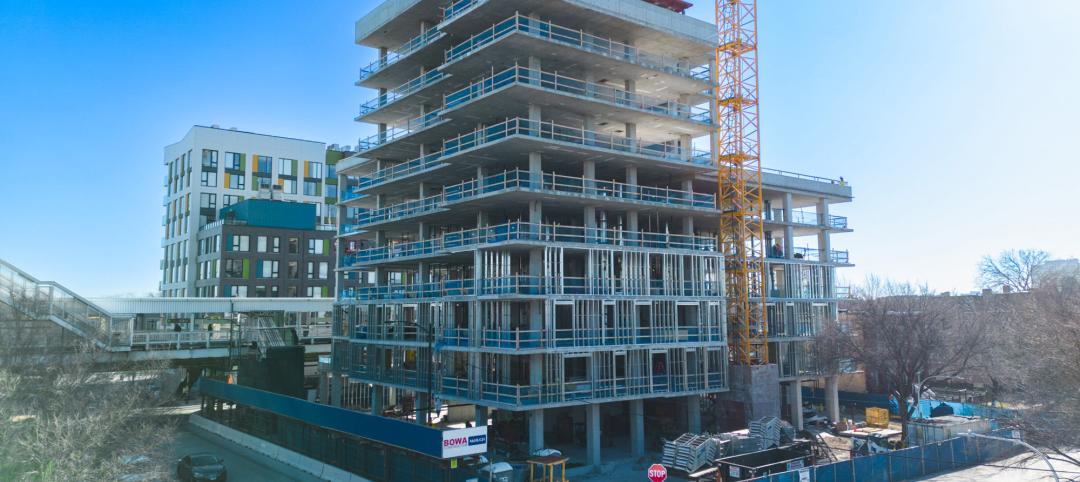Over the past year or so, California-based AO has enjoyed a bump in its retail design assignments that, according to its Managing Partner Rob Budetti, can be attributed mostly to retail being integrated into larger mixed-use projects—one of the leading retail design trends today.
“The mixed-use trend is expanding to more non-traditional elements, incorporating industrial, retail, entertainment, residential into one cohesive development,” he explains. One such example in AO’s portfolio is Phase II of Mountain View Village in South Valley, Utah. AO designed the master plan for this 85-acre destination with more than one million sf of constructed space that includes 30 dining options, a 14-screen Cinemark Theater complex, 177,000 square feet of Class A offices, and shopping options for health and beauty, apparel, home furnishings, and electronics.
The landscaping of Mountain View Village, whose construction was completed in 2022, features thousands of plants and 1,700 new trees. “Our goal was to design and plan a retail concept that replicated a downtown feel with a sense that the buildings were developed over time,” says Budetti.
Retail has also been one of Kimley-Horn’s fastest-growing practice sectors, increasing nearly 80% in 2022, according to Lesley Netzer, the firm’s Director of Retail. Mixed use drove that growth, as traditional shopping malls “are turning into communities offering a combination of apartments, gyms, grocery stores, theaters, retailers, offices, and restaurants.” One of Kimley-Horn’s recent projects, for which it provided civil engineering, due diligence, and permitting services, was The Yard at Fischers District in Indiana, a mixed-use development with multiple restaurants and retail within close proximity. To the east of Fischers District, which was completed last year, Kimley-Horn continues to work on a development called The Stations, which will include a retail pad, a hotel, an office building pad, and 37 townhouses.
Adjusting to seismic disruptions in the retail sector
Retail was as hard hit by the coronavirus pandemic as any corner of the U.S. economy. Simultaneously, retailing was being rattled by the tectonic shift to where online shopping and ordering predominate. These factors alone have made the sector harder to read, even as most of the AEC Giants contacted for this article say their retail practices have been thriving lately.
“On the occupier side of retail, our work has slightly decreased. Our clients are being cautious due to the economy,” says Greg Lang, CBRE’s Senior Managing Director–Retail and Multi-Site sector. However, he adds, his firm has seen an uptick in demand among its investor clients for tenant coordination and real estate development services “for the first time in 2-3 years.”
(Investors and developers continue to send out mixed signals about their interest in retail properties. A few weeks after BD+C interviewed Lang, Pacific Retail Capital Partners acquired the 1.2 million-sf Bridgewater Commons shopping mall in New Jersey, with more than 150 retail tenants. The acquisition included an adjacent 94,000-sf open-air shopping district called The Village at Bridgewater Commons. On the other hand, David Simon, CEO of the mall giant Simon Property Group, told WWD last February that his company wasn’t planning on buying more retailers, at least in the near term.)
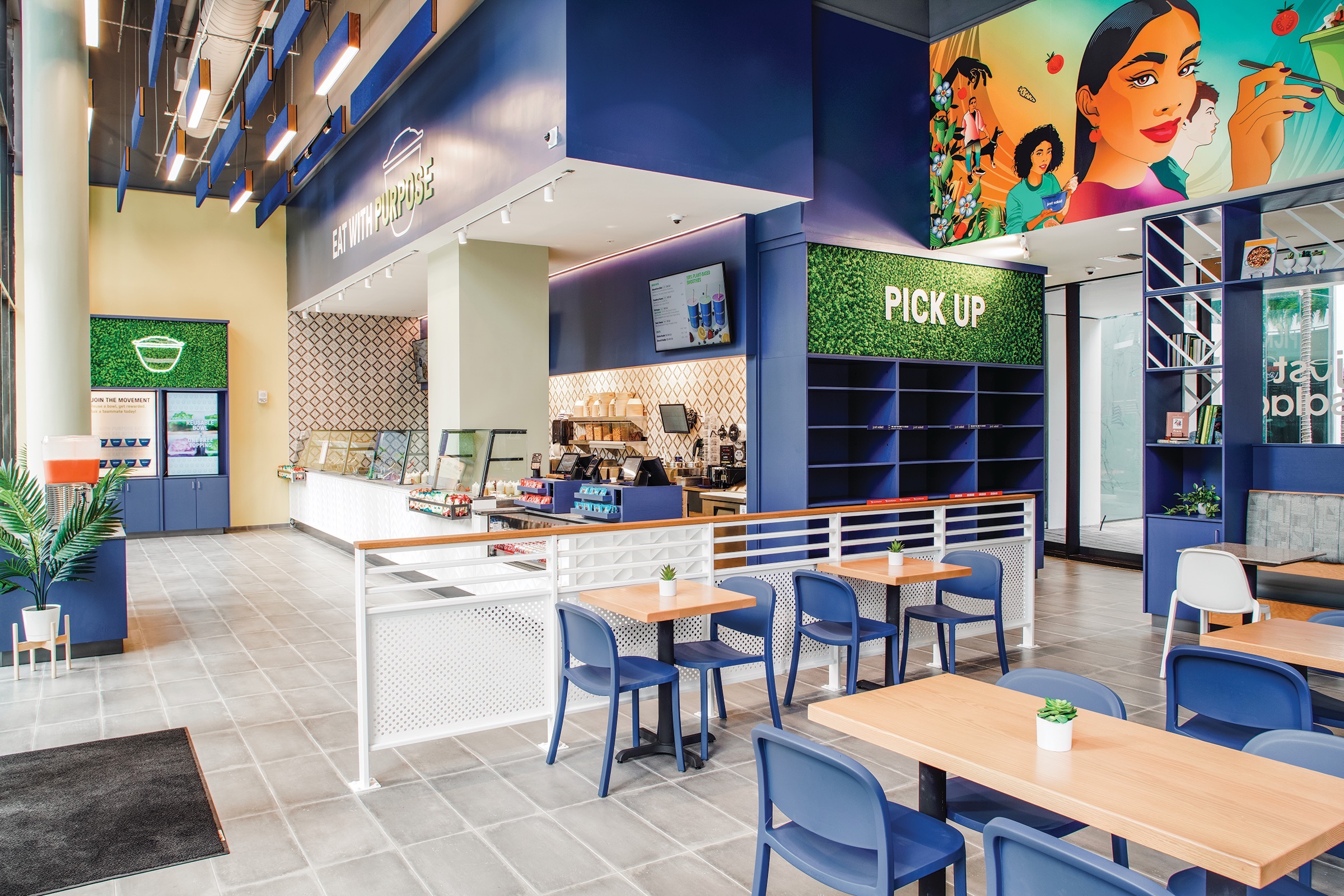
Jonathan Fiato, Shawmut Design and Construction’s Senior Director–New York Region, says his firm has also seen an increase in retail-related construction demand, especially among retailers and brands that are investing in their flagship locations. He cites BMW Mini’s Manhattan flagship as one prominent example, as well as Culture Kings’ U.S. flagship, a two-story, 25,000-sf store that opened last November in The Forum Shops at Caesars in Las Vegas. This is Culture Kings’ largest store to date, and features a 75-foot-tall hat wall, arcade machines for patrons, a basketball half court, and a slushy bar. The building team on this project included Henderson Engineers, bokor architecture + interiors, Bunnyfish Studio, and Lighting Design Alliance.
It goes without saying that survival now requires retailers to have a strong and palpable online presence, which includes their physical stores being able to accommodate BOPIS, which stands for “buy online pick up in store.” “Systems need to connect seamlessly to online ordering, inventory, etc., and be easily managed by instore associates,” asserts Michele Devereaux, CPSM, Marketing Strategist for the retail mixed-use practice of Callison RTKL, a division of Arcadis.
While AEC firms report less downsizing of bricks and mortar stores than might be expected, they have been seeing more retailers reducing their in-store inventories in favor of spacious showroom presentations. Retailers “are trending toward right sizing that enhances the omnichannel retail experience,” says Shawn Bland, Core States Group’s Director of Retail. This trend, he adds, has been a boon for his firm’s in-house architectural, engineering, and program management services to help retail clients devise branded, unique brick-and-mortar environments. (Bland points specifically to his firm’s recent work for Primark in Sunrise, Fla., Just Salad in Miami, and the Lidl grocery in Exton, Pa.)
Opportunities for reinvention of retail design
Jason Zoeller, Retail Sector Executive for Henderson Engineers, says that retail clients should always be thinking ahead about how their spaces might need to evolve in the future. He says he’s already seeing a shift toward flexibility about store locations at a time when there’s broad availability of retail space that’s cost effective and offers greater return on investment.
This flexibility is creating opportunities for renovation and adaptive reuse. “We continue to push innovation and develop creative design solutions for clients seeking flexible spaces which can contract and expand based on tenant needs,” says AO’s Budetti.
Lounges in banks and car dealerships are signs of this trend. Other examples find Kimley-Horn helping a nationwide general merchandise retailer upgrade its MEP systems and secure permitting to move refrigeration to the front of its stores. Netzer adds that shopping center developers are collaborating with AEC firms to design interior spaces that appeal to multiple generations, and are ordering landscape architecture for exterior spaces of national restaurants.
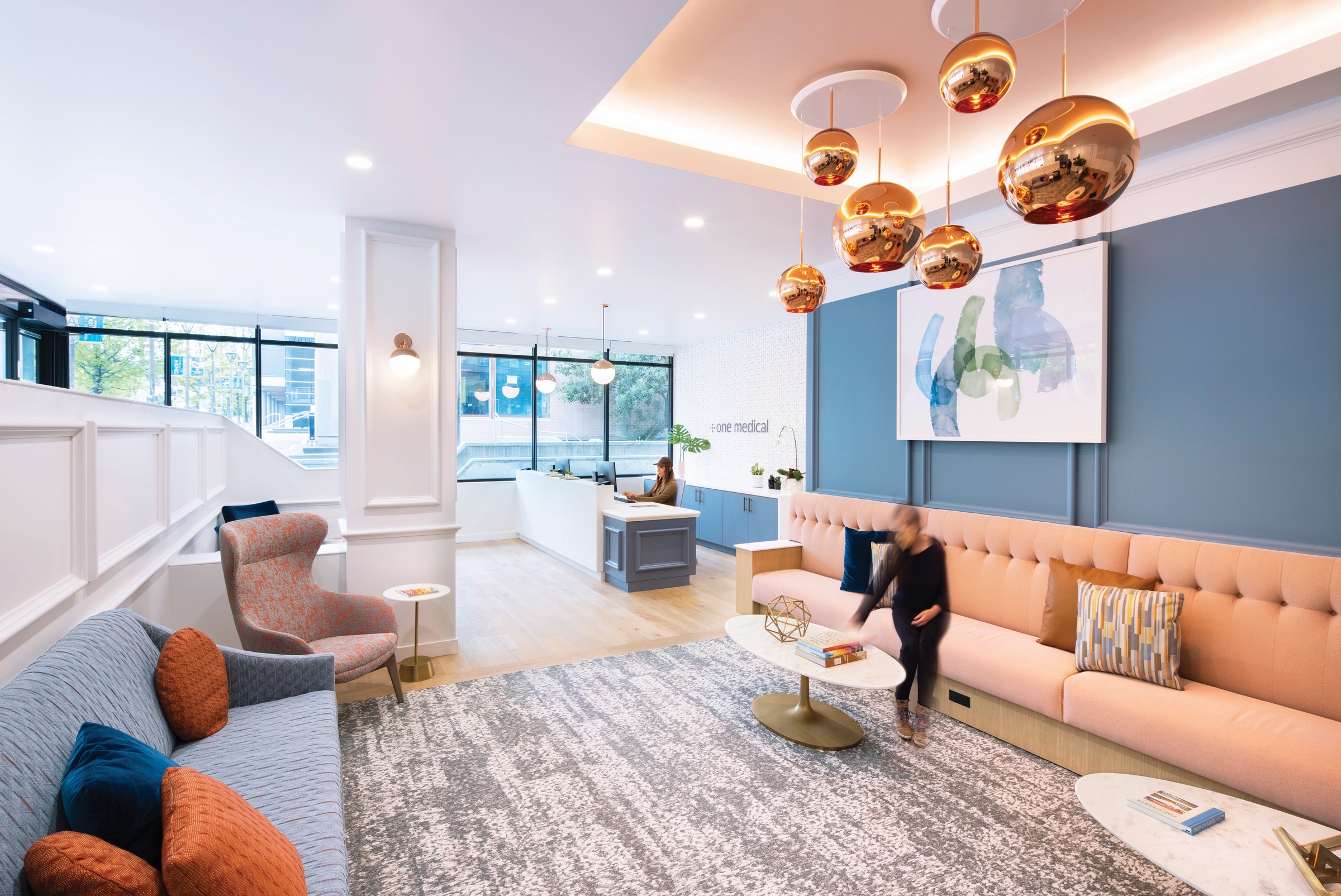
To accommodate customers who prefer to order online from their smartphones or cars, quick-service restaurants are building more drive-thrus or mobile-only smaller buildings. (Netzer notes, parenthetically, that these retailers still have the same land needs because the pickup spaces must be larger.)
Retailers are turning to AEC firms when they need to reposition their image with consumers. For example, CallisonRTKL recently helped Petco transform its brand from a big-box pet products store to a health-and-wellness service for pets and their owners. The redesign entailed wider aisles and streamlined wayfinding to make the store easier to navigate. The service design focuses on quality and convenience, and supports every in-store interaction.
Non-retail tenants welcomed
AEC firms say that retail developers and property owner/managers have become more receptive to leasing space to non-retail tenants in shopping plazas and strip malls.
“What’s changed,” explains AO’s Budetti, “is the integration of expanded asset types like multifamily, medical, hospitality, coworking, fulfillment, and larger entertainment venues.” As part of the so-called “Medtail” trend, CallisonRTKL has been assisting One Medical Group, a concierge medical practice, to reposition its spaces as calming, comfortable environments. Since 2017, the firm has provided architectural design and construction administration services for more than a dozen of One Medical Group’s locations that range from 3,000 to 6,000 sf, many of them within retail centers, says Devereaux.
Non-retail tenants sometimes have design and engineering requirements that are different from basic clothing or jewelry stores. “Ventilation, finish treatments, wall assemblies, and lighting are all considerations,” says Devereaux.
AO, says Budetti, has found that upgrades to existing structures are often required to handle larger live loads. Making changes might also mean that zoning needs to be renegotiated. Lang of CBRE says that plumbing is “a major challenge” when converting retail space for non-retail use, especially in older enclosed malls whose infrastructure “never contemplated fitness, education, or medical/dental tenants.” Lang adds that electrical systems in open-air centers typically need upgrades and more capacity. Bland of Core States Group notes as well that accommodating non-retail tenants usually means an increased need for low-voltage design services for technology such as frictionless checkout, POS ordering, and lighting and security controls.
Zoeller of Henderson Engineers suggests that having the right design and construction partners to evaluate a space before leasing is crucial, and often helps when negotiating better leasing terms depending on the upgrades needed.
Related Stories
Sustainability | Mar 13, 2024
Trends to watch shaping the future of ESG
Gensler’s Climate Action & Sustainability Services Leaders Anthony Brower, Juliette Morgan, and Kirsten Ritchie discuss trends shaping the future of environmental, social, and governance (ESG).
MFPRO+ Special Reports | Feb 22, 2024
Crystal Lagoons: A deep dive into real estate's most extreme guest amenity
These year-round, manmade, crystal clear blue lagoons offer a groundbreaking technology with immense potential to redefine the concept of water amenities. However, navigating regulatory challenges and ensuring long-term sustainability are crucial to success with Crystal Lagoons.
Products and Materials | Jan 31, 2024
Top building products for January 2024
BD+C Editors break down January's top 15 building products, from SloanStone Quartz Molded Sinks to InvisiWrap SA housewrap.
Mixed-Use | Jan 29, 2024
12 U.S. markets where entertainment districts are under consideration or construction
The Pomp, a 223-acre district located 10 miles north of Fort Lauderdale, Fla., and The Armory, a 225,000-sf dining and entertainment venue on six acres in St Louis, are among the top entertainment districts in the works across the U.S.
Mixed-Use | Jan 26, 2024
Entertainment districts are no longer just about sports, dining, and music
Diversity of experiences is what makes entertainment districts tick these days. That’s one reason why offices continue to be included in district proposals. And in their efforts to emerge as year-round destinations, more districts are either including residential in their proposals or supporting existing districts with housing.
Mixed-Use | Jan 19, 2024
Trademark secures financing to develop Fort Worth multifamily community
National real estate developer, investor, and operator, Trademark Property Company, has closed on the land and secured the financing for The Vickery, a multifamily-led mixed-use community located on five acres at W. Vickery Boulevard and Hemphill Street overlooking Downtown Fort Worth.
Affordable Housing | Jan 18, 2024
Habitat tops off second apartment building at 43 Green
The co-developers of 43 Green celebrate the latest milestone for the $100 million, mixed-income, mixed-use project in Bronzeville: topping off Phase 2 while reaching full lease-up of the Phase 1 apartment building.
Adaptive Reuse | Jan 18, 2024
Coca-Cola packaging warehouse transformed into mixed-use complex
The 250,000-sf structure is located along a now defunct railroad line that forms the footprint for the city’s multi-phase Beltline pedestrian/bike path that will eventually loop around the city.
Sponsored | BD+C University Course | Jan 17, 2024
Waterproofing deep foundations for new construction
This continuing education course, by Walter P Moore's Amos Chan, P.E., BECxP, CxA+BE, covers design considerations for below-grade waterproofing for new construction, the types of below-grade systems available, and specific concerns associated with waterproofing deep foundations.
Sustainability | Jan 10, 2024
New passive house partnership allows lower cost financing for developers
The new partnership between PACE Equity and Phius allows commercial passive house projects to be automatically eligible for CIRRUS Low Carbon financing.


